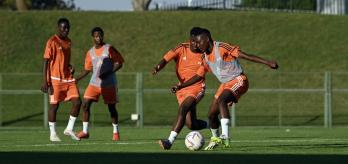Dr Archer and his colleagues analysed over 22,000 player observations across seven English Premier League seasons to determine whether the evolutionary trends they observed were position-specific. In this research brief, he explains the changes they identified, and considers their implications for coaches and practitioners. The other members of Dr Archer's team were Dr Michael Bush, Mr Chris Barnes, Dr Bob Hogg and Dr Paul Bradley.
Key take-aways
-
Over the seven seasons of the study, there were substantial physical and technical changes affecting almost every position.
-
The biggest changes in physical demands were seen in wide players, while players in the centre of defence and midfield developed most dramatically from a technical point of view.
-
Coaches should prepare players to cope with these evolutionary changes, including by developing position-specific training regimes.
-
This evolution is still ongoing, so coaches should review players' performance benchmarks regularly and consider how the game is developing when recruiting players to make sure their teams are equipped for the current demands of competition.
Watch brief
Read summary
Part 1: Background
The opening section of the presentation explains how the research team analysed developments in the English Premier League over a period of seven seasons (2006/07 – 2012/13). This involved collecting data from a sample of over 22,000 player observations, which was then assigned to five categories of outfield positions. Across the seven seasons, the researchers identified major changes in both the physical and technical aspects of the game, some of which directly affected how players in specific positions were expected to operate on the pitch.
Part 2: Findings
So, what did these changes look like? In part two of the presentation, Dr Archer discusses key changes in two particular areas: sprinting and passing. Players are being asked to sprint more frequently and more explosively than in previous years, partly as a result of tactical developments. For instance, full-backs displayed the most pronounced physical changes due to the dual role of a modern wide defender. In possession, they play an important role in attacks (e.g., by overlapping in advanced areas) but out of possession, they are expected to track back to fulfil their defensive duties. From a technical perspective, both the number of passes players are expected to make and the level of accuracy required have increased across all positions. This is particularly true of central defenders, who are often expected to build possession from the back.
Part 3: Implications
Dr Archer concludes by highlighting the implications of this study for coaches, which fall into four broad areas. He goes on to examine each of these four areas in turn, and emphasises the need for coaches and practitioners to reflect the way the game is evolving in their training and recruitment practices. Only by adapting to the changes taking place in the modern game will coaches be able to keep players safe and ensure they are able to deliver consistently high levels of performance every time they step onto the pitch.
Paper citation and link
Bush, M., Barnes, C., Archer, D., Hogg, B., Bradley, P., 2015, “Evolution of match performance parameters for various playing positions in the English Premier League”, Human Movement Science, vol. 39, pp. 1-11.















